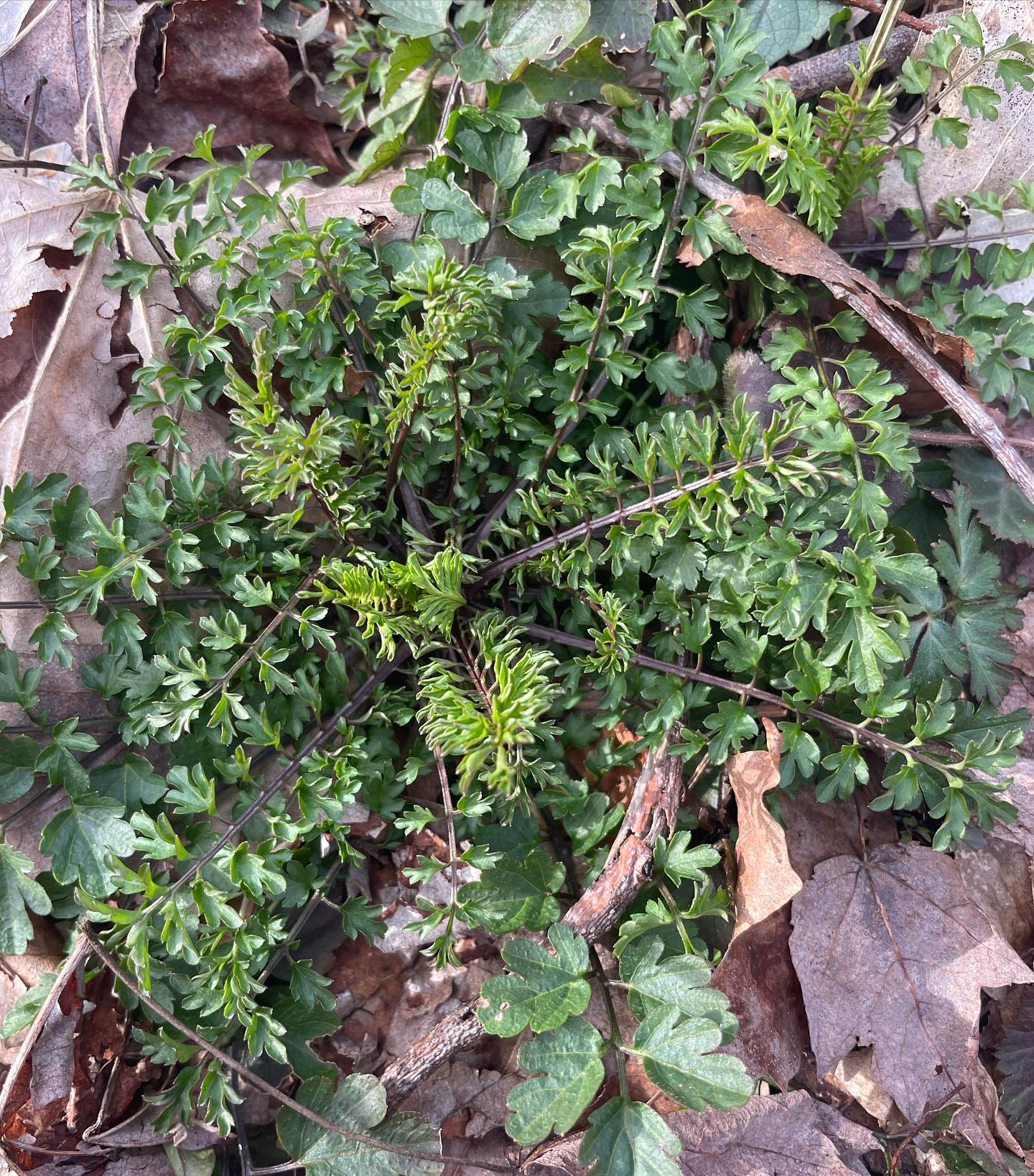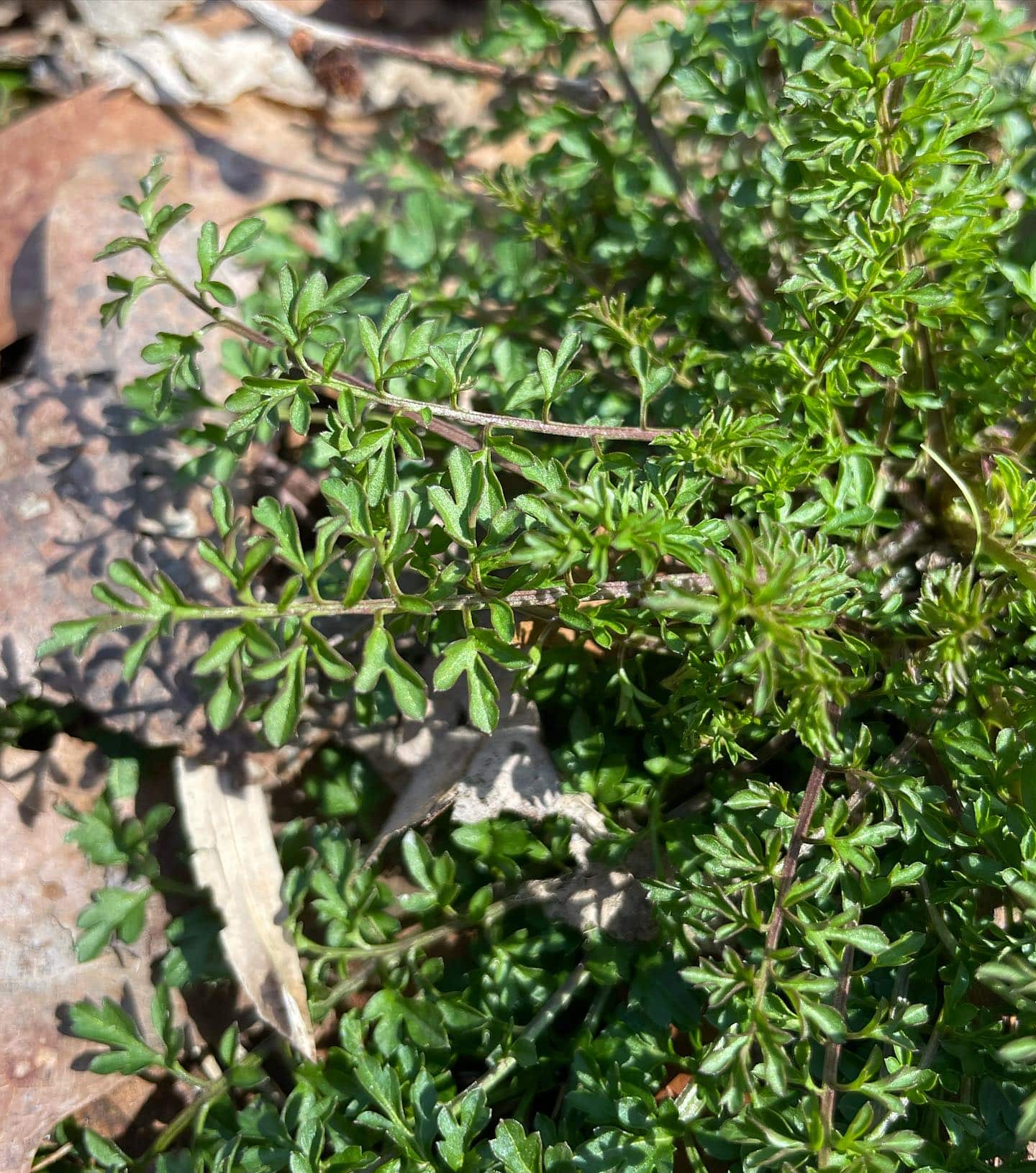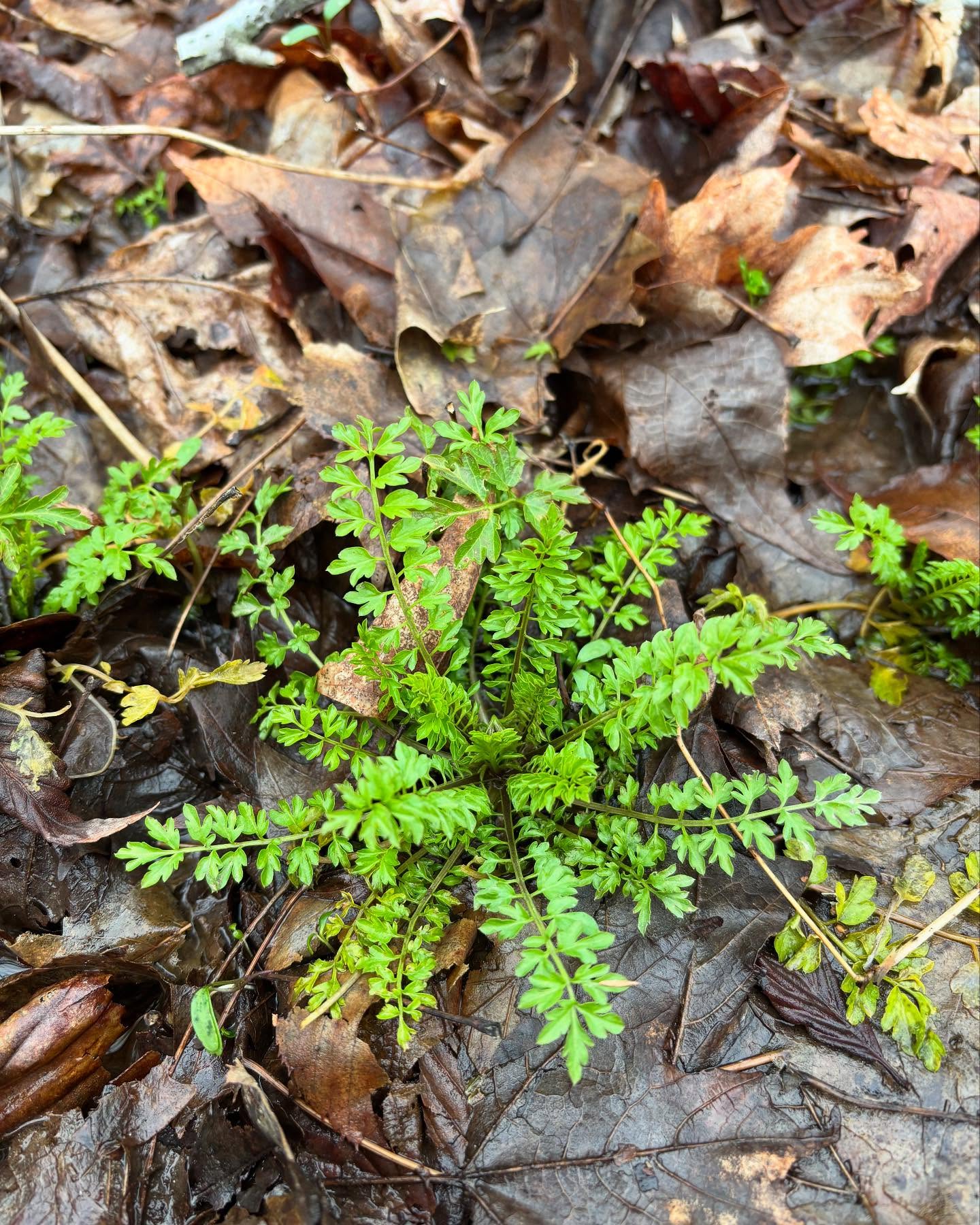Page Created by Connecticut Foraging Club
Upcoming Events | Meet the Instructors | Plant Archive | Mushroom Archive
----------------
Upcoming Events | Meet the Instructors | Plant Archive | Mushroom Archive
----------------
Narrowleaf Bittercress (Cardamine impatiens) in an edible invasive plant in the mustard family.

Narrowleaf bittercress can be found in woodlands, meadows, and near rivers. It prefers shade.
The plant starts as a rosette with leaves with 13-21 leaflets. These leaflets are round with lobes. As the plant ages, it produces a flowering stalk with alternate leaves with 6-20 leaflets. The leaflets on the flowering stalk are more linear and less lobed. The flowers are small and have four white petals.

All bittercresses are edible, although some are tastier than others. The leaves and flower stalks are edible raw or cooked. They add a mustardy flavor to wild green salads. The root can also be grated and used as flavoring.

Narrowleaf bittercress contains glucosinolates which help to remove carcinogens from the body. It is also high in vitamin C and beta-carotene.
--
Written by Amy Demers, founder of the Connecticut Foraging Club. To learn more about foraging in Connecticut, check out our upcoming classes.






